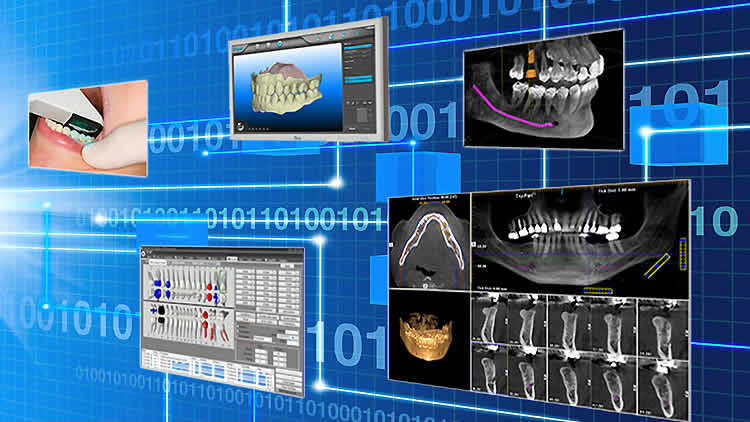What is Digital Dental Technology?
Posted by Howard M. Steinberg, DMD, MDS

Digital Dental Technology
Digital technologies are improving various aspects of dental care, from diagnosis to treatment planning and restoration. Some of today’s most popular digital dental technologies include the following:
- Intraoral Scanners
- Digital Radiography
- Digital Patient Records
- Artificial Intelligence (AI)
- Digital Impression Systems
- Occlusion Analysis Systems
- Computer Aided Anesthetic Delivery
- Dental Practice Management Software
- Computer Aided Design & Manufacturing (CAD/CAM)
Dr. Howard M. Steinberg uses digital dental technology to design complex treatment plans and to quickly communicate with multiple team members. Digital models of a patient’s teeth are sent electronically to the dental lab along with CT scans, digital images and treatment plans. Dental lab technicians and ceramists can see a digital 3D model of the patient’s teeth which helps them understand exactly what needs to be fabricated. Dental crowns, bridges, dentures and other prostheses are created and delivered in days rather than weeks.
Before digital dental technology, there was a lot of guess work involved in placing dental implants. Thanks to cone beam computed tomography (CT scans) and computer guided implant planning software, Dr. Steinberg performs dental implant procedures much faster and with greater precision. Digital dental technology has definitely reduced the costs and treatment times associated with dental implants.
Benefits of Digital Dentistry
Today, more than ever, dentists are reaping the benefits of digital dentistry. Dramatic breakthroughs in intraoral imaging, CAD/CAM and digital impression systems have enabled modern dentists to deliver more informed diagnoses, pursue more effective treatments, collaborate more easily with dental labs, and communicate more clearly with patients. While digital technologies offer many advantages to dental practitioners, they also provide benefits to patients. Here are the main benefits:
- Improved efficiency — Less time and lower cost
- Improved accuracy in comparison to previous methods
- A high level of predictability of treatment outcomes
- Improved patient education, comfort and satisfaction
Summary
Digital dental technology is positively changing the way modern dental practices operate. Advancements in digital tools and techniques have enabled dentists to deliver more informed diagnoses, pursue more accurate treatments, collaborate more effectively with dental labs, and communicate better with patients and team members. When appropriately used, digital dental technology can streamline work processes, facilitate seamless exchange of data and enable dental professionals to deliver more appropriate and timely patient care.


